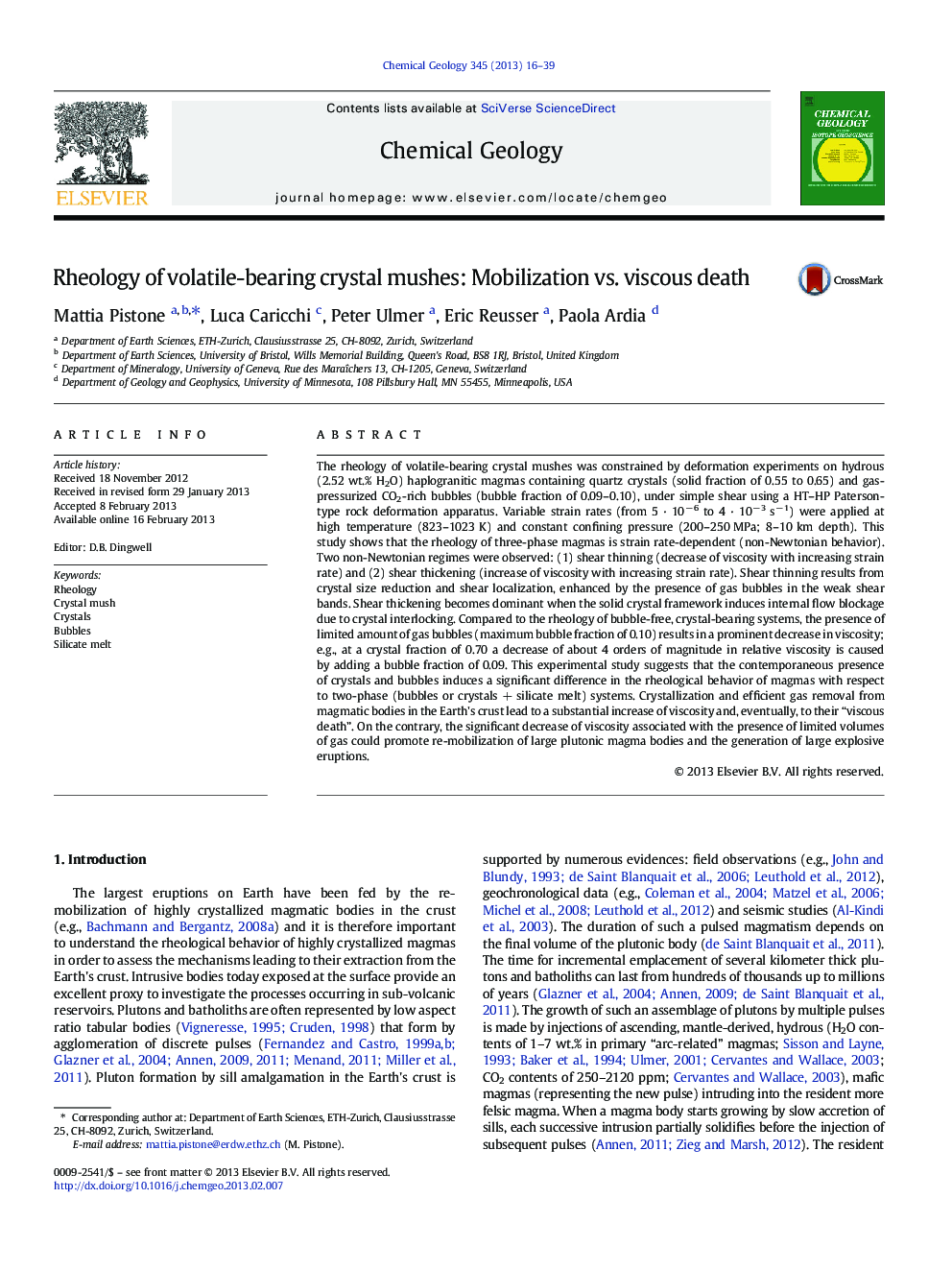| Article ID | Journal | Published Year | Pages | File Type |
|---|---|---|---|---|
| 4699053 | Chemical Geology | 2013 | 24 Pages |
The rheology of volatile-bearing crystal mushes was constrained by deformation experiments on hydrous (2.52 wt.% H2O) haplogranitic magmas containing quartz crystals (solid fraction of 0.55 to 0.65) and gas-pressurized CO2-rich bubbles (bubble fraction of 0.09–0.10), under simple shear using a HT–HP Paterson-type rock deformation apparatus. Variable strain rates (from 5 · 10− 6 to 4 · 10− 3 s− 1) were applied at high temperature (823–1023 K) and constant confining pressure (200–250 MPa; 8–10 km depth). This study shows that the rheology of three-phase magmas is strain rate-dependent (non-Newtonian behavior). Two non-Newtonian regimes were observed: (1) shear thinning (decrease of viscosity with increasing strain rate) and (2) shear thickening (increase of viscosity with increasing strain rate). Shear thinning results from crystal size reduction and shear localization, enhanced by the presence of gas bubbles in the weak shear bands. Shear thickening becomes dominant when the solid crystal framework induces internal flow blockage due to crystal interlocking. Compared to the rheology of bubble-free, crystal-bearing systems, the presence of limited amount of gas bubbles (maximum bubble fraction of 0.10) results in a prominent decrease in viscosity; e.g., at a crystal fraction of 0.70 a decrease of about 4 orders of magnitude in relative viscosity is caused by adding a bubble fraction of 0.09. This experimental study suggests that the contemporaneous presence of crystals and bubbles induces a significant difference in the rheological behavior of magmas with respect to two-phase (bubbles or crystals + silicate melt) systems. Crystallization and efficient gas removal from magmatic bodies in the Earth's crust lead to a substantial increase of viscosity and, eventually, to their “viscous death”. On the contrary, the significant decrease of viscosity associated with the presence of limited volumes of gas could promote re-mobilization of large plutonic magma bodies and the generation of large explosive eruptions.
► Rheology of volatile-bearing crystal mushes is strain-rate dependent. ► Shear thinning results from crystal size reduction and shear localization. ► Shear thickening results from the crystal interlocking. ► Shear thinning is associated to magma mobilization. ► Shear thickening is associated to “viscous death” of magmas.
